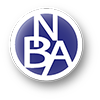Chris Clemens
Forum Replies Created
-
AuthorPosts
-
Chris Clemens
KeymasterThank you so much for the explanation, and please thank your "favorite Physics teacher" for me too.
PattyChris Clemens
KeymasterThanks, Lindy.
I think that'll work for me.Fran
Chris Clemens
KeymasterHi. I have been asked to give my opinion on the topic of the use of the Nemeth asterisk as a multiplication sign in a 3rd grade workbook.
As far as I know, Promising Practices (guidelines for K-3 braille materials) does not address this.
As a braille transcriber, we are to braille what we see, following rules in the Nemeth Codebook and the BANA 2007 Update.
Certainly if this workbook is being brailled for production, you would not change the asterisk to a multiplication dot.
If, on the other hand, you are (or are working for) a Teacher of the Visually Impaired and are producing the workbook for a specific student and *only for that student, and the teacher has expressly asked you to use the multiplication dot instead of the asterisk, I would follow the teacher's request. HOWEVER, this is not Code, and should not be common practice.
PLEASE NOTE: The asterisk is used as the multiplication symbol when students are using a calculator. The asterisk is the symbol on the calculator keypad, and that is the symbol we braille, using NC keystroke notation. I would not change the asterisk to a multiplication dot in exercises that are meant for calculator practice.Lindy Walton
Chris Clemens
KeymasterThis should work out just fine if you use the words supplied in the chart. I would include a transcriber's note stating
the following:
(TN) The chart is brailled as a list. The English letter equivalent is followed by the hieroglypic label.A Eagle (1)
A Arm (2)
B Foot (3)
etc.If a puzzle follows, I would include the numeral in parentheses with each hieroglyph name; that will make it easier for the student to locate the item since the hieroglyphics are not in English alphabetical order.
Lindy Walton (answering for Dorothy)
Chris Clemens
KeymasterThank you for this fine question. I have asked my favorite Physics teacher who says emphatically that this is an English letter "v" used in the physics of motion.
Do not italicize these letters in braille.
Please note that the lower-case Greek nu *is used to denote "frequency" in the physics of wavelengths.Lindy Walton (answering for Dorothy)
Chris Clemens
KeymasterHi Laura.
The ellipsis must be spaced (see NC Sec.43b)
Braille the entire numeral, then one blank cell, then the ellipsis.As for your curiosity question, I have asked my favorite math teacher who says that
repeating decimals should have a horizontal bar (macron) over the repeating numeral/s.
He would interpret 2.46... as a rounded number, with additional digits not shown.Regardless, we braille what we see, following Nemeth Code spacing rules.
Thank you for your question.
Lindy Walton (answering for Dorothy)Chris Clemens
KeymasterSo sorry, forgot to attach .pdf with first post
Chris Clemens
KeymasterAs long as each link does not require a runover, begin a new line only if the expression which follows the sign of comparison will not fit on the current line. Example (2) in NC Sec.189b illustrates.
There are two reasons you would need to begin a new line at *each comparison sign: (a) if you are following the format for special linked expressions as defined in NC Sec.189b, or (b) if any link requires a runover.
Lindy Walton (answering while Dorothy is away)
Chris Clemens
KeymasterThank you both. Just what I wanted.
Chris Clemens
KeymasterPrint copy often spaces terms and symbols in an equation or expression. In braille we follow Nemeth Code spacing rules. Do not space between the numeral and the function name or abbreviated function name which follows.
A space is required following the function name/abbreviation and its modifications, if any, as explained and illustrated in the Nemeth Codebook, Sec.119.--Lindy Walton (answering for Dorothy)
Chris Clemens
KeymasterIs this what you are looking for?
On page 226 of An Introduction to Braille Mathematics Section 145:
No space should be left before a function name or its abbreviation unless it iis preceded by a symbol requiring a space.
(21) shows an example of a space in print.
Chris Clemens
KeymasterWould you use it in a 3rd grade workbook?
Chris Clemens
KeymasterI don't know of any. Have you asked on the MENVI list?
Larry
Chris Clemens
KeymasterWell, then, THAT was easy. If I may, you are courageously doing foreign language. You have enough to worry about. I do not include this sort of thing in my own FL transcribing, but I wanted to be sure it's really OK to leave it out. It is!
--Joanna
Chris Clemens
KeymasterThank you so much!! I am going to happily omit it. 🙂
-
AuthorPosts
